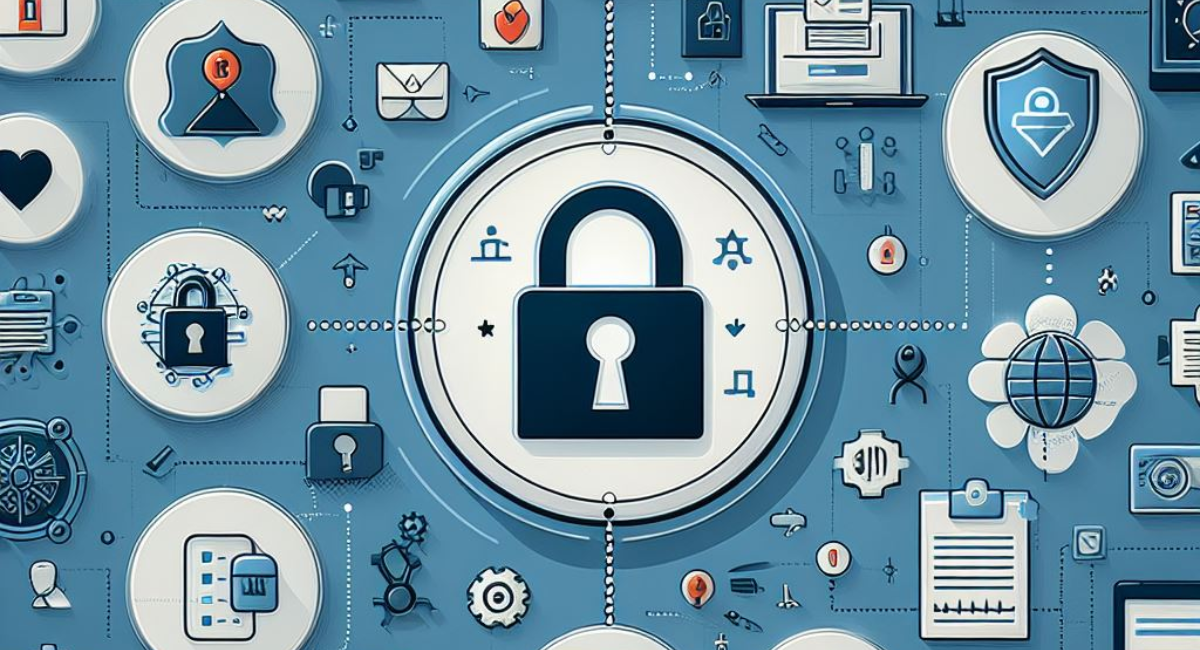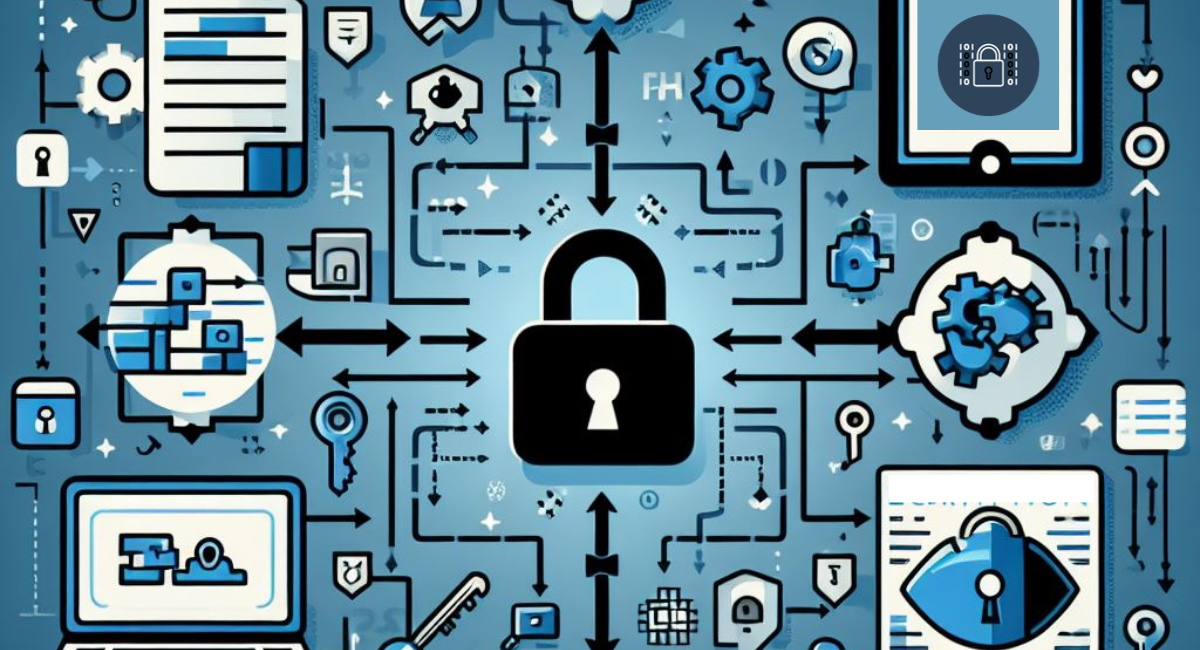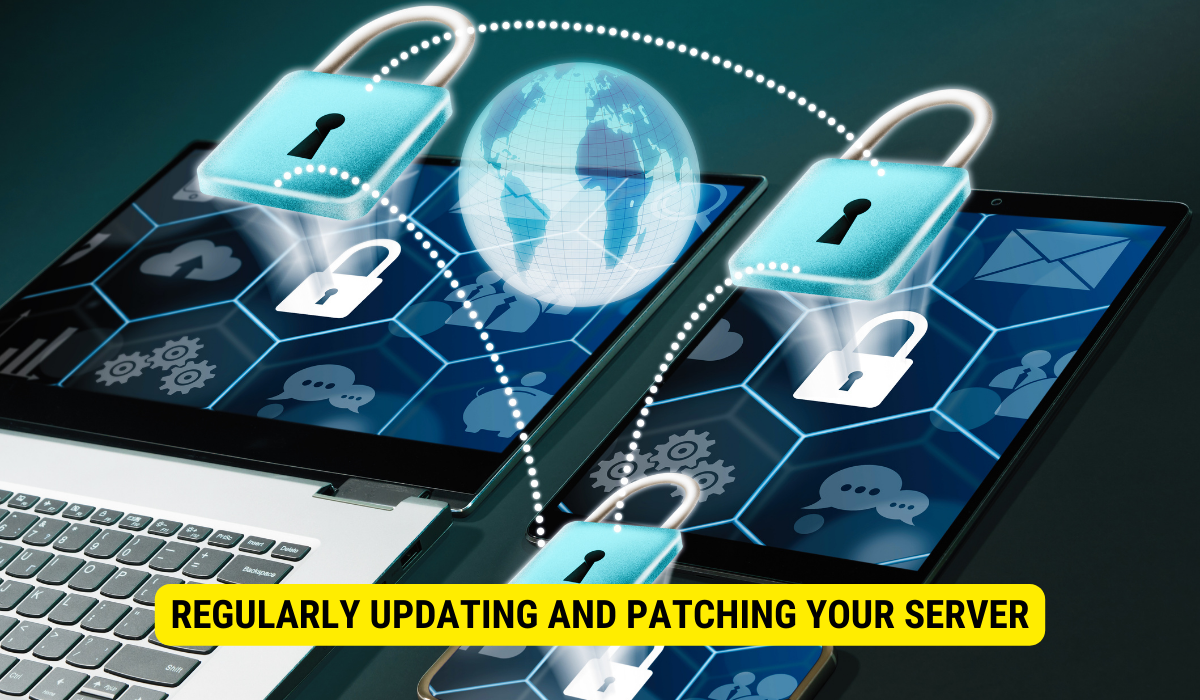To securely store data on a home server, it’s essential to understand data security basics, set up the server correctly with updates and strong passwords, use data encryption, employ secure file transfer protocols, and schedule regular server maintenance.
Data security is a crucial concern for individuals and businesses in today’s digital age. With the increasing amounts of sensitive information being stored and transferred, it is essential to ensure your data is securely stored on your home server. I will guide you through securely storing data on your home server, from understanding the basics of data security to implementing encryption and using secure file transfer protocols.
Understanding the Basics of Data Security
Data security is the practice of protecting digital info from unauthorized entry, theft, or damage. It encompasses various measures and strategies to ensure data confidentiality, integrity, and availability. Understanding the importance of data security is crucial before diving into the technical aspects of securing your home server.
When it comes to data security, it is not just about protecting your personal files or financial records. It goes beyond that. Data has become a valued asset for individuals and businesses in today’s digital age. From sensitive personal information to trade secrets and intellectual property, data holds immense value. This is why data security is of utmost importance.
The Importance of Data Security

Data security is paramount because it helps prevent unauthorized access to sensitive information. Whether you store personal files, financial records, or confidential business data on your home server, ensuring their security is essential to protect your privacy and prevent potential financial or reputational damages. Data breaches and unauthorized access can lead to identity theft, financial fraud, or legal consequences.
Imagine the consequences of a data breach where your personal information, such as your social security number, credit card details, or medical records, falls into the wrong hands. The impact can be devastating, not only financially but also emotionally. Recovering from such an incident can take years, and the damage to your reputation may be irreparable.
For businesses, data security is equally critical. Imagine the implications of a competitor gaining access to your confidential business plans, customer data, or proprietary algorithms. It can lead to severe financial losses, loss of customer trust, and even the downfall of the entire business. The importance of data security cannot be overstated.
Key Concepts in Data Security
Before we delve further, it is essential to understand some key concepts in data security. These concepts include authentication, authorization, and encryption. Authentication confirms that only authorized individuals can access the data. Authorization defines what actions users can perform once they are authenticated. Encryption is converting data into a coded form that can only be decrypted by official parties, making it unreadable to anyone unauthorized.
Authentication plays a crucial role in data security as it verifies the identity of users before granting them access to sensitive information. It can involve various methods such as passwords, biometrics, or two-factor authentication. By implementing strong authentication measures, you can significantly reduce the risk of unauthorized entry to your data.
Authorization, conversely, determines the level of access granted to authenticated users. It defines what actions they can perform, what files they can view or modify, and what functionalities they can access. By implementing proper authorization mechanisms, you can confirm that users have the necessary permissions to perform their tasks while preventing unauthorized actions.
Encryption is an important aspect of data security. It protects data by converting it into a coded form that can only be deciphered by authorized parties with the corresponding decryption key. Encryption provides an additional layer of security, even if an unauthorized individual gains access to the encrypted data. Without the decryption key, the data remains unreadable and useless to them.
Various encryption algorithms and methods are available, each with strengths and weaknesses. Choosing the right encryption method for your data depends on factors such as the level of security required, the sensitivity of the data, and the resources available for implementation.
Understanding these key concepts in data security is essential for building a strong foundation in securing your home server. By implementing robust authentication, authorization, and encryption measures, you can significantly recover the security of your data and protect yourself from potential threats.
Setting Up Your Home Server for Secure Data Storage
Now that you grasp the basics of data security, let’s move on to setting up your home server for secure data storage. This section will cover choosing the right home server and configuring it to enhance security.
Several important factors must be considered when setting up a home server for secure data storage. One of the first things you must consider is your server’s location. Ideally, it would help if you placed it in a cool, dry area away from direct sunlight and other potential sources of damage. This will help confirm the longevity and reliability of your server.
An additional crucial aspect to consider is the storage capacity of your home server. Depending on your needs, you may opt for a server with ample storage space to accommodate your data requirements. It’s always better to have more storage than you think you’ll need, as it allows for future expansion and prevents the need for constant upgrades.
Processing power is another vital consideration. A server with a powerful processor can handle multiple tasks simultaneously and efficiently. This is particularly important if you plan on running resource-intensive applications or services on your server.
Compatibility with security features is also a key factor. Look for a home server that supports essential security protocols and features, such as secure remote access and built-in encryption capabilities. These features will help protect your data from unauthorized entry and ensure its confidentiality.
Choosing the Right Home Server
When selecting a home server, it is crucial to consider factors like storage capacity, processing power, and compatibility with security features. Opt for a server with sufficient storage space to accommodate your data needs and support essential security protocols and features, such as secure remote access and built-in encryption capabilities.
Additionally, consider the scalability of the server. As your data storage needs grow, you may need to expand your server’s capacity. Choosing a server that allows for easy scalability will save you time and effort in the long run.
Furthermore, it’s essential to research and choose a reputable brand or manufacturer for your home server. Look for servers with a proven track record of reliability and customer satisfaction. Reading reviews and seeking recommendations from trusted sources can help you make an informed decision.
Configuring Your Home Server
Once you have chosen the right home server, it’s time to configure it for enhanced security. Begin by updating the server’s firmware and operating system to the latest versions to confirm you have access to the newest security patches and bug fixes. Regular updates are vital for maintaining the security and stability of your server.
Next, turning off any unnecessary services and ports on your server is important. Doing so reduces potential attack vectors and minimizes the risk of unauthorized access. Only enable the services and ports that are essential for your specific needs.
Setting up a strong, unique administrator password is another critical step in securing your home server. Avoid using common passwords or easily guessable combinations. Instead, create a password that is long, complex, and includes a combination of uppercase and lowercase letters, numbers, and special characters.
Furthermore, enabling two-factor authentication adds an extra layer of security to your home server. This means that in addition to entering your password, you must provide a second verification form, such as a code sent to your mobile device. Two-factor verification significantly reduces the risk of unauthorized access, even if your password is compromised.
Regularly review and update your server’s security settings as new threats and vulnerabilities emerge. Stay informed about the newest security best practices and implement them on your home server to ensure ongoing protection of your valuable data.
Implementing Data Encryption
Data encryption is a powerful means of securing your data at rest and in transit. This section will explain data encryption and provide step-by-step instructions on encrypting your data on the home server.
What is Data Encryption?

Data encryption involves converting your data into an unreadable format using encryption algorithms. This confirms that even if someone gains unauthorized access to the data, they won’t be able to read or understand it without the decryption key.
Steps to Encrypt Your Data
- Identify the sensitive data you want to encrypt, such as personal files, financial documents, or sensitive business data.
- Choose a suitable encryption algorithm that provides a balance between security and performance.
- Utilize encryption software or built-in encryption features provided by your home server to encrypt the selected data.
- Create and securely store the decryption keys. Without these keys, the encrypted data cannot be accessed.
- Regularly back up your encrypted data to prevent loss and ensure business continuity.
Using Secure File Transfer Protocols
Securely transferring files to and from your home server is essential to maintain data integrity and confidentiality. This section will provide an overview of secure file transfer protocols and guide you through implementing secure file transfer methods.
Overview of Secure File Transfer Protocols
Secure file transfer protocols, such as SFTP (Secure File Transfer Protocol), FTPS (FTP over SSL/TLS), and HTTPS (HTTP over SSL/TLS), encrypt data during transit to protect it from unauthorized interception or modification.
Implementing Secure File Transfer
To implement secure file transfer, consider the following steps:
- Enable secure file transfer protocols on your home server, such as SFTP or FTPS.
- Generate server keys and certificates to authenticate the server and establish a secure connection.
- Require client authentication to ensure that only authorized individuals can access the server.
- Regularly monitor and log file transfer activities to detect unauthorized attempts or anomalies.
Regularly Updating and Patching Your Server
Regular server maintenance, including updates and patches, is vital to maintain a secure environment for your data. This last section will explain the role of updates in server security and emphasize the significance of scheduling regular server maintenance activities.
The Role of Updates in Server Security
Software vendors release updates and patches to address security vulnerabilities, bug fixes, and performance improvements. Regularly updating your home server’s software, firmware, and operating system ensures that known security weaknesses are patched, reducing the risk of exploitation by hackers and cybercriminals.
Scheduling Regular Server Maintenance
To maintain an optimal level of security, schedule regular server maintenance activities, including updates, patches, backups, and security audits. Implement automated update mechanisms to ensure that your home server stays up to date with the latest security fixes. Conduct periodic security audits to identify potential susceptibilities and take appropriate measures to address them.
Key Takeaways
- Data security involves ensuring the confidentiality, integrity, and availability of data stored on a home server.
- Data encryption is paramount for securing stored data, making it unreadable without the decryption key.
- Secure file transfer protocols like SFTP and FTPS protect data during transit, ensuring it’s safe from unauthorized access.
- Regularly updating and patching your home server addresses known security vulnerabilities, keeping the server secure.
- Strong authentication methods, including two-factor authentication, reinforce server security against unauthorized access.
FAQs
What is the purpose of data encryption on a home server?
Data encryption changes data into an unreadable format using encryption algorithms, ensuring unauthorized users can’t access it without the decryption key.
Why is regular updating and patching vital for a home server?
Regular updates patch known security vulnerabilities, ensuring the server is protected against exploitation by cyber threats.
How can I securely transfer files to and from my home server?
Implement secure file transfer protocols such as SFTP, FTPS, or HTTPS to encrypt data during transit and prevent unauthorized interception.
What role does a strong password play in securing a home server?
A strong password acts as the first line of defense against unauthorized access, making it essential to use a complex combination of characters for enhanced security.
Why is regular server maintenance necessary?
Regular server maintenance, including updates, backups, and security audits, ensures the server remains secure and runs optimally, protecting against potential vulnerabilities.
Conclusion
Securing data on a home server is a multi-step process ensuring data integrity, confidentiality, and availability. By understanding data security fundamentals, employing encryption, using secure transfer protocols, and maintaining regular server updates, individuals can ensure a fortified storage environment, protecting their valuable information from potential threats.
